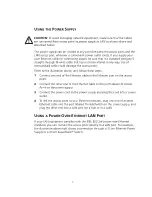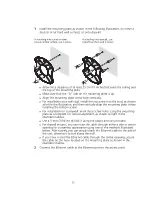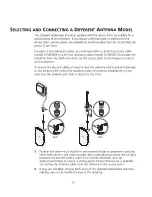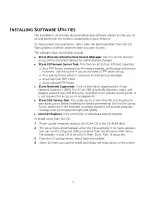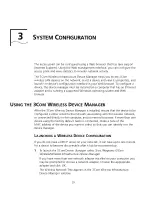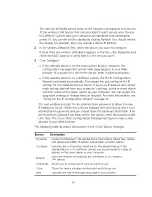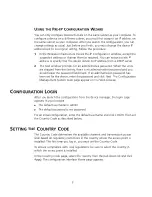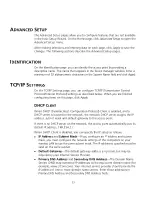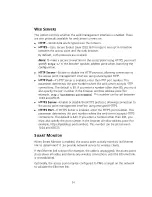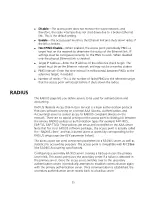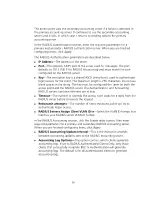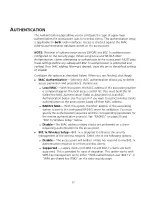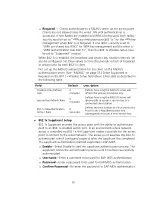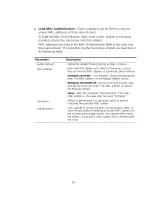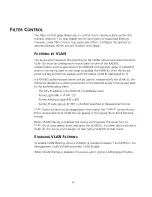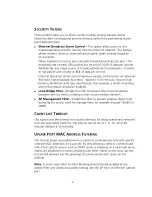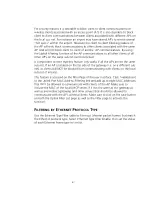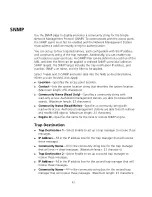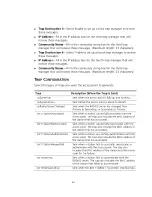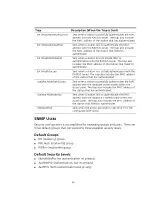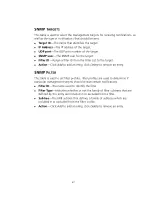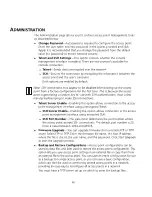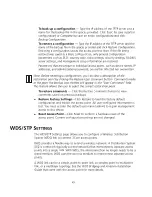
35
Disable
—The access point does not monitor the wired network, and
therefore, the radio interface does not shut down due to a broken Ethernet
link. This is the default setting.
Enable
—The access point monitors the Ethernet link and shuts down radios if
the link is broken.
Host PING Enable
—When enabled, the access point periodically PINGs a
target host on the network to determine the status of the Ethernet link. IP
settings must be configured correctly for the PING to work. When disabled,
only the physical Ethernet link is checked.
Target IP Address—Enter the IP address of the reference check target. The
target must be on the Ethernet network and may not be a wireless station.
PING Interval—Enter the time interval (in milliseconds) between PINGs to the
reference target, if enabled.
Number of retries—This is the number of failed PINGs to the reference target
that the access point will accept before if shuts down the radios.
RADIUS
The RADIUS page lets you define servers to be used for authentication and
accounting.
RADIUS (Remote Access Dial-In User Service) is a login authentication protocol
that uses software running on a central AAA (Access, Authentication, and
Accounting) server to control access to RADIUS-compliant devices on the
network. There are no special settings on the access point to distinguish between
the various RADIUS policies or authentication types (for example EAP-MD5,
EAP-TLS, EAP-TTLS). These policies are setup and controlled on the AAA server.
Note that for most RADIUS software packages, the access point is actually called
the “RADIUS client” and has a shared secret or secret key corresponding to the
RADIUS setup page (see
KEY
parameter below).
The access point can send connection parameters to a RADIUS server, as well as
statistics for accounting purposes. The access point is compatible with RFC2866
(the RADIUS Accounting specification).
Configuring a secondary RADIUS server provides a backup in case the primary
server fails. The access point uses the secondary server if a failure is detected in
the primary server. Once the access point switches over to the secondary
authentication server, it periodically attempts to establish communication again
with the primary authentication server. Once communication is established, the
secondary authentication server reverts back to a backup server.

